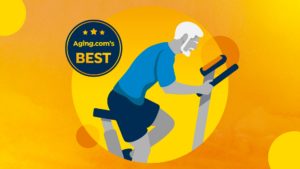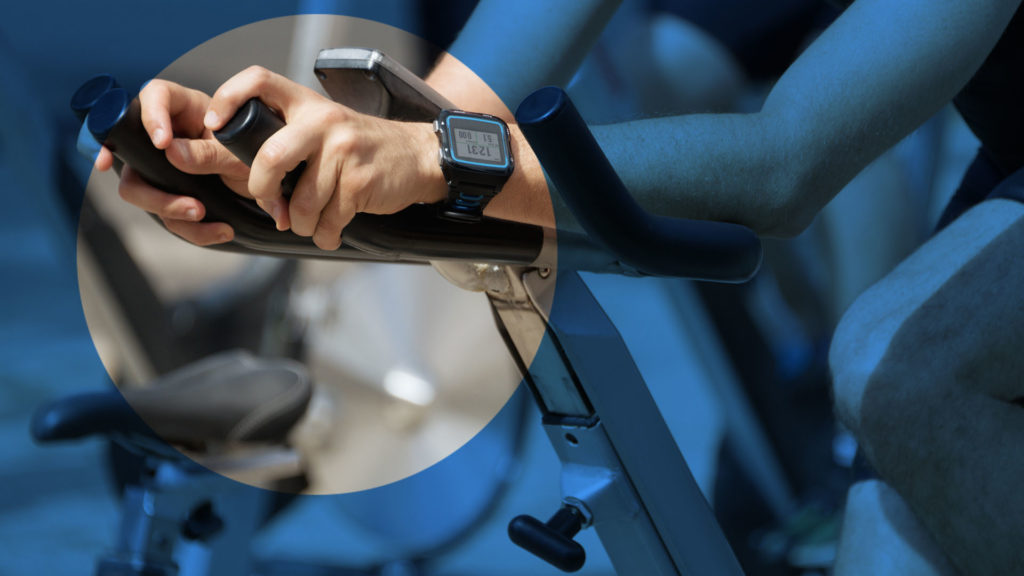
Are Exercise Bikes Good For Losing Weight?

In a study by the CDC’s National Center for Health Statistics, about half of U.S. adults tried to lose weight in the last 12 months. Losing weight is all about energy in versus energy out. Input more energy that you output and you will gain weight, but flip that around and output more energy than you input and you lose weight. It’s really that simple.
Any exercise and daily activity help tip the scale in favor of weight loss. Exercise bikes are non-weight bearing by design and enable you to exercise at higher intensity more frequently than other exercise options. These factors of intensity and frequency are key to maximizing energy output and losing weight.
Find What You Need
The Big Picture
Losing weight is about energy in versus energy out.
Energy only comes into your body through what you eat and drink. Your body does not pull energy from the sun like plants or from the air you breathe. Energy is input one mouthful at a time. There are many Calorie trackers that will help you track how much energy is going into your body.
Energy is output in one of two ways. First, your body uses energy all the time, even when sleeping. It’s called your Basal Metabolic Rate (BMR). It’s what keeps you alive: pumping blood, breathing, digestion, maintaining a body temperature of 98.6°, etc. BMR depends on gender assignment, age, height, and weight.
The second way energy is output is by doing work in the high school physics sense of the word. This isn’t limited to what we think of as exercise: biking, walking, running, or a pickleball match. It also includes vacuuming, shopping, walking through the parking lot, typing, and anything else other than lying still. A smartwatch or fitness tracker is a terrific tool to track energy spent. Most exercise equipment will also calculate how many Calories you output.
Any diet (energy in) coupled with any exercise plan (energy out) can work. It’s all about the balancing, or more accurately, unbalancing input and output.
Basal Metabolic Rate (BMR) Calculator
Calculating Weight Loss
Let’s look at some sample calculations. I’ll do the math. Just get a feel for how the numbers balance … or don’t balance.
Using a BMR calculator, a 55-year-old woman, 5 feet 7 inches tall and weighing 180 pounds has a BMR of around 1,500 Calories. She does 30 minutes of moderate intensity cycling and outputs or “burns” 400 Calories. She is moderately active during the rest of the day and outputs another 700 Calories through various daily activities. That’s a total output of 2,600 Calories for the day. (1,500+400+700)
If she consumes 2,600 Calories, she maintains her weight.
Weight loss scenario: She rides an extra 15 minutes and outputs 600 Calories on the bike. This raises her daily output to 2,800 Calories (1,500+600+700). If she still consumes 2,600 Calories, she will lose weight. An energy out of 2,800 Calories is greater than an energy in of 2600 Calories.
Weight gain scenario: She skips the bike and now outputs 2,200 Calories. (1500 + 700). If she consumes the same 2,600 Calories, she gains weight. 2,200 is less than 2,600.
One pound of body fat contains 3,500 calories. If you divide the extra Calories you burn or the extra Calories you eat by 3,500, you can calculate weight loss or gain on a daily basis.
Look at the weight loss scenario with the extra 200 Calories output. She loses 200/3,500 = 0.057 pounds on that day.
In the weight gain scenario, it’s 400/3,500 = 0.114 pounds that she gains on that day.
Remember that small numbers over long periods of time turn into big numbers. It’s a lot like investing your money. That 0.057 pounds doesn’t sound like much but over 30 days, that is 1.7 pounds and over a year, it adds up to 20 pounds lost in a year!
It works the other way too, of course. Skip the ride and those 0.114 pounds per day translate to 3.4 pounds per month and 40 pounds gained per year.
Note: Weighing yourself daily is not a great strategy for tracking weight loss unless you are calculating running averages from the data. Your body is in large portion water and your state of hydration or fluid retention varies day to day by amounts that are often larger than the daily weight loss or gain numbers. Just going to the bathroom will make a measurable difference in your weight.
Frequency
Frequency plays a large part in any weight loss. In our 20 pounds per year weight loss example above we assumed exercising every day. That’s unrealistic. If she skips the ride once a week and balances energy in with energy out on days she doesn’t ride (aka skips a 200 Calorie snack), she loses about 17 pounds in a year. Ride 5 times per week and the math still works out to 14 pounds per year.
If you ride 5 times per week but still consume the 200 Calorie snack on days you don’t ride, the numbers work out to 2.8 pounds lost per year.
So how often you get on the exercise bike has a direct relationship to weight loss. This is why it’s so important to find an exercise bike that is comfortable, easy to use, and enjoyable. The more often you ride, the more often you tip the scale toward weight loss.
Weight Bearing vs. Non-Weight Bearing
A big advantage for exercising on a bicycle is that it is non-weight bearing for the most part. Non-weight bearing exercise means you are not supporting your body weight on your legs. Exercises like swimming, cycling, rowing, water aerobics, some yoga poses, and seated exercises are non-weight bearing.
Riding an exercise bike will typically exert lower forces on the body (think feet, ankles, knees, hips) than walking, running, or other weight bearing exercises. If the forces on your body are lower while riding an exercise bike compared to running, this means you can probably ride longer in a given session. Lower forces also correspond to faster recovery between exercise sessions so you might feel ready to get back on the bike sooner after a hard ride than a hard run.
Arthritis, joint replacement, and injury can all make non-weight bearing exercises necessary. Swimming is great but half of all people don’t swim and access to pools can be difficult. Cycling, especially indoors on an exercise bike can be easier and more accessible. In the US, about 1 in 3 people will ride a bike for exercise in a given year.
Calories Burned
How many Calories do you burn while riding an exercise bike? It depends on how hard you ride, aka intensity, and how long you ride.
Riding at low intensity for 30 minutes might burn around 250 Calories. Riding at high intensity for 60 might burn 1,000 Calories or more.
This article goes into detail on How many Calories do you burn on an exercise bike.
How To Maximize Weight Loss on an Exercise Bike
Maximizing weight loss goes back to the very first sentence: Losing weight is about energy in versus energy out. Read that again. Losing weight is about energy in versus energy out. The laws of physics which govern the Universe also govern your weight loss.
To maximize weight loss, output more energy than you input. The further you tip the scale toward exercise and activity and away from energy in or Calories consumed, the more you maximize weight loss.
High Intensity Intervals
There is good evidence that high-intensity interval training (HIIT), will result in your body continuing to burn Calories at a higher rate even after you finish the HIIT workout.
On an exercise bike (after a good warm up) a high-intensity interval workout might look like repetitions of riding hard (high cadence and high resistance) for 20 seconds, followed by 40 seconds of easy spinning (lower cadence and lower resistance).
You might find you can push yourself hard for short intervals more easily on a seated exercise bike than you can by running or swinging a kettlebell. I find it’s mentally easier to push hard those last few seconds of a high-intensity interval on a bike knowing I can collapse onto the handlebars and grab my water bottle right away. While running, I can’t push as hard since collapsing on the sidewalk is not really an option and I left my water bottle at home.
While you might not have the energy to do a HIIT workout every day, throw one in once in a while to maintain variation in your workouts.
Summary
Losing weight is all about energy in versus energy out. Energy out is a function of intensity and duration. Exercise bikes are an excellent means to help you lose weight by expending energy while offering a range of control over your intensity and duration.
Riding an exercise bike in a seated position with a water bottle and towel handy, might allow you to increase the intensity over other exercise options. Pairing the exercise bike with your favorite series or movie you haven’t found the time to watch can boost the duration. An exercise bike can help you increase those energy out numbers and lose weight.
Since exercise bikes are mostly non-weight bearing, most people can use them on a daily basis. The more often you exercise the more weight you can lose. If you do other weight bearing exercises, then an exercise bike can be a great addition for recovery days.
Content on this site is for reference and information purposes only. Do not rely solely on this content, as it is not a substitute for advice from a licensed healthcare professional. Aging.com assumes no liability for inaccuracies. Always read labels and directions before using a product or prescription.



